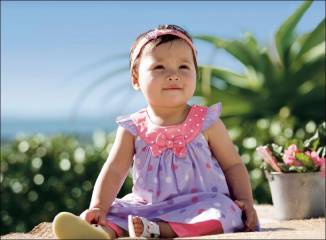
Tailoring the right fit for Pumpkin Patch
Pumpkin Patch is a New Zealand company that specializes in higher-end children’s wear. The company began in New Zealand in 1990 and expanded into Australia in 1993, and has managed to reach mature growth in both markets. Many Australasian retailers that reach mature growth will use their positions to support overseas expansions. Pumpkin Patch has managed to launch a profitable wholesale business by signing distribution agreements to hundreds of department stores around the world. However, its store rollout into the UK in 2001 and the US in 2005 has really hurt the company. This retail model was never profitable, and while a high New Zealand dollar and sluggish retail environment did little to help their margins, management were unable to replicate the success of the Australasian stores. The company accumulated NZD13.5 million of retained losses before management made the decision to close their UK and US stores and focus on their online and wholesale divisions.
Now that management has restructured the company to focus on their core operations, Pumpkin Patch’s potential growth story looks far more promising. Online sales comprised 11 per cent of revenues in 2012 and generated profits that exceeded the earnings from all of the New Zealand retail stores combined. Pumpkin Patch has also managed to sign key wholesale agreements with reputable overseas retailers, such as Amazon which will sell its products online in the UK, France and Germany. In addition, while the retail market in Australia and New Zealand has been weak, the divisions are still generating tidy profits.
A company that emerges from a restructure after generating sustained losses can provide a great opportunity to invest at the ground floor. In Pumpkin Patch’s case, it is still unclear if management can successfully turn around the business after keeping the overseas stores running for so long. However, we will be watching Pumpkin Patch with interest.
This post was contributed by a representative of Montgomery Investment Management Pty Limited (AFSL No. 354564). The principal purpose of this post is to provide factual information and not provide financial product advice. Additionally, the information provided is not intended to provide any recommendation or opinion about any financial product. Any commentary and statements of opinion however may contain general advice only that is prepared without taking into account your personal objectives, financial circumstances or needs. Because of this, before acting on any of the information provided, you should always consider its appropriateness in light of your personal objectives, financial circumstances and needs and should consider seeking independent advice from a financial advisor if necessary before making any decisions. This post specifically excludes personal advice.
INVEST WITH MONTGOMERY
A little more information for those that are interested can be found on
http://www.pumpkinpatch.biz.I found their ‘.com’ site useless for investors so I contacted the coy and they provided the above.Tony
I do not hold the same view Andrew, while it is true and correct that families will look to cut their budgets according to their cloth, when it comes to the Family pet and the topic of this discussion that logic doesn’t seem to carry through. Pumpkin Patch is not a high end branded clothing label and fits most families budgets – which is probably one of their key existing success drivers. So to summarise if as Roger has pointed out that management have not only rationalised Pumpkin Patches footprint, or at least the way they have gone about it, and Management have also put in place a quality vision to recapture what they were successful at in the past, then I think there is a great chance for this company and investors alike.
Of course just my 2 cents worth as well.
My two cents on the below.
Pumpkin Patch do well when people have the money to make emotional purchases. However when people and the economic sentiment is one where people are looking to squeeze every penny then as nice as it seems to buy semi-designer clothes for babies (many of whom will soon grow out of it) it is not economic as people will instead go to target, big w or kmart where they can buy some nice baby clothes for $5 each.